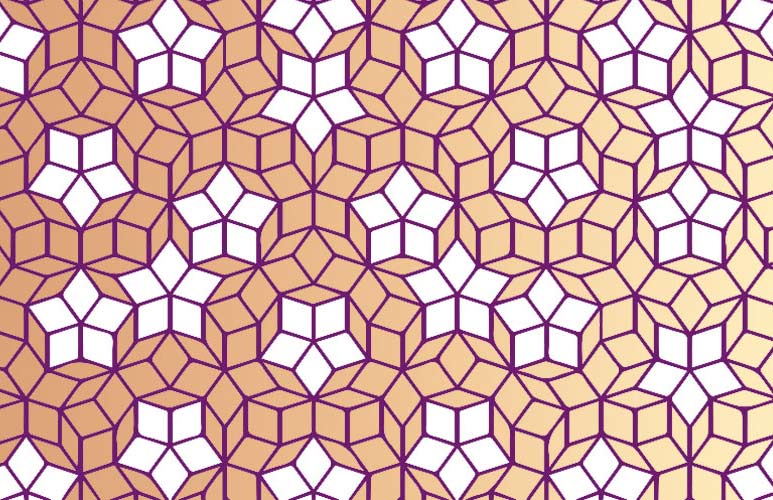In this video, Cindy Darbandi and Ida Rodriguez offer an honest account of studying design at The Open University (OU). While studying with us, they also played a key role in co-designing the new Bachelor of Design (BDes) qualification during their Virtual Internship. I am certain one of the proudest moments in their internship was planning this video, from writing the storyboard and script to recording the video in the OU studio.
 Figure 1 Cindy and Ida’s storyboard for the video
Figure 1 Cindy and Ida’s storyboard for the video
Cindy and Ida describe their experiences as distance learners and offer helpful tips to prospective students. They share moments of accomplishment and strategies for overcoming challenges. I want to offer some reflections on their account. I have been a design academic with the OU for over 15 years, and this video reaffirms several important points I have observed in successful design students at the OU.
 Figure 2 Cindy and Ida in the studio
Figure 2 Cindy and Ida in the studio
A designer’s attitude
OU design students possess a distinct curiosity – a thirst for knowledge, growth and change. This could manifest as a desire for new skills, personal development, career advancement, or reigniting a passion for learning. They share a common thread: a willingness to embrace new ideas, immerse themselves in their surroundings, take pride in their work, and inspire others. Many students keep notes of observations, ideas, and sketches to tackle everyday problems. Could this be you?
Learning by doing
Design education at the OU, like most design schools worldwide, is hands-on and project-based. Students have the opportunity to engage in a wide range of projects, solidifying the notion that design isn’t just theory. Designers tackle real-world problems, improving lives – that’s the allure of design education. Students get actively involved as a project begins with identifying a problem or topic. After researching existing solutions, they brainstorm ideas tailored to a specific group or situation. These ideas are refined into detailed plans, built into prototypes, and tested. The final stage involves critical evaluation, often requiring input from others. This reflective process can be challenging but it’s essential for project and learning success.
OU students learn independently but they are not alone
Cindy and Ida highlight an important point in the video: building a support network is crucial for distance learners. But this is not as difficult as it may sound. Students often already have a network, or they can use many opportunities during their studies to build one.
Many students, at some point, may feel isolated or question if this path is right for them. This is why a strong support system is even more essential in design than in other disciplines. Design isn’t done in a vacuum. Ultimately, you’ll be designing for others, whether you’re pursuing a design career or integrating design principles into your existing role (a practice becoming increasingly common in healthcare, finance, government, education, and various service industries).
Remote design study involves finding others to bounce ideas off and seek feedback. This doesn’t necessarily mean formal teamwork. It could be your friends, family, colleagues, or fellow students. Cindy mentions her study buddy from a face-to-face meetup, while Ida uses her family as a sounding board.
Independent learning with support
While you’ll have your support network, independent study remains a significant aspect of OU learning. Here, your tutor becomes your cornerstone. Successful design students pay close attention to their tutor’s general advice in online tutorials and use specific feedback on their assignments to improve their design work constantly. Your tutor will advise you on the best way to contact them, so don’t hesitate to seek clarification if you are unsure about anything. Initially, formulating your questions might be challenging, or you might feel hesitant to contact your tutor for minor issues. Remember, communication fosters trust and understanding. Discuss your concerns and build a strong rapport.
Enrich your learning journey
Extracurricular activities, although not credit-bearing, offer immense value. Beyond joining student unions or clubs, the Design program provides opportunities for meetups, museum visits, workshops e.g. Designing for the future of mobility: A Day at Coventry Museum of Transport, and online design talks. From your first year, you can participate in the Annual Show, a student design competition and exhibition, or the Designathon, a day-long event where you collaborate with an organisation to solve a practical problem. Internship opportunities become available from the second or third year onwards.
Embrace the change
You might wonder how you’ll manage studying alongside your existing commitments. Or perhaps connecting with others makes you nervous. Remember, design is about change, and it will transform you too. But you must take the first step. Distance education may appeal to you because you seek change without disrupting your current life. And the potential for positive change is a powerful motivator that can propel you through challenges. Be patient – your designer identity will evolve gradually.
A unique advantage of studying design at the OU is that you remain grounded in your everyday experiences, unlike traditional design schools. This allows you to tackle real-world problems in your projects and discover what truly matters to you.




Rate and Review
Rate this video
Review this video
Log into OpenLearn to leave reviews and join in the conversation.
Video reviews